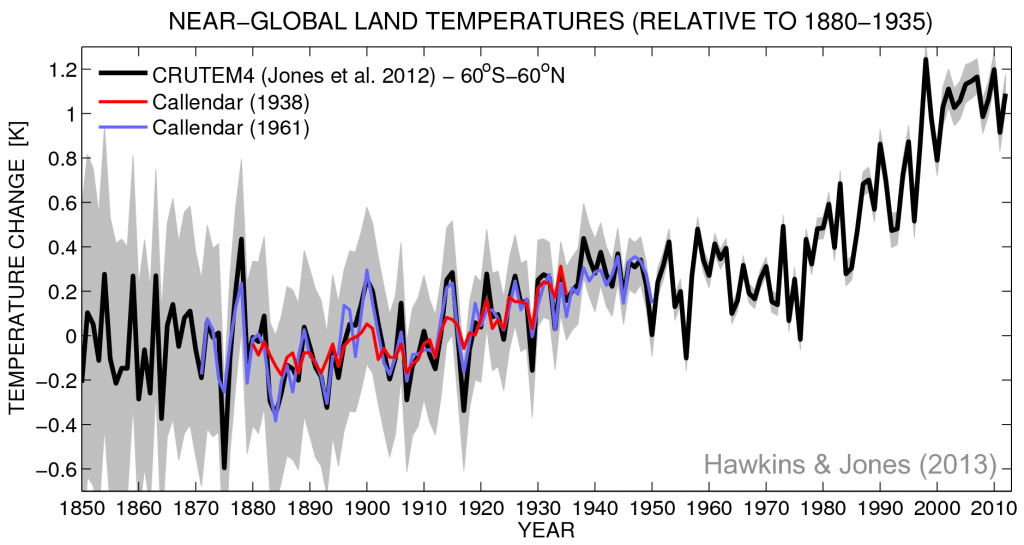It’s been four years since Greta Thunberg famously asked global leaders: ‘How dare you?’, two years since David Attenborough called on us to ‘act now’, and one year since COP27 in Egypt. But when did we start talking about climate change?
One of the first scientists to experiment the effect of greenhouse gases on temperature was Eunice Foote: an American scientist, inventor, and women’s rights campaigner. In 1856, Foote published a paper entitled ‘Circumstances Affecting the Heat of Sun’s Rays’, highlighting the relationship between the proportion of carbon dioxide in the atmosphere and its temperature. Her experiment consisted of two glass cylinders with thermometers – one with carbon dioxide gas in and the other with air. Both were left in the sun, and Foote found that the cylinder with carbon dioxide heated up more than the other. This suggested carbon dioxide held heat from the sun more readily than other gases.
“An atmosphere of [carbon dioxide] would give to our earth a high temperature; and if as some suppose, at one period of its history the air had mixed with it a larger proportion than at present, an increased temperature…must have necessarily resulted.” Eunice Foote (1856) Circumstances Affecting the Heat of Sun’s Rays, The American Journal of Science
Being a woman, however, put her at a disadvantage in the academic world of the mid-1800s. Eunice Foote didn’t read her paper at the national meeting of American scientists, and it was instead presented by a male surrogate, Joseph Henry.
3 years later, in 1859, John Tyndall published his paper which included a more detailed investigation into how carbon dioxide and water vapour could increase global temperatures. Tyndall was able to recognize the difference between solar radiation and radiated heat from Earth, whereas Foote focused on solar radiation. Tyndall didn’t cite Foote’s work as he very possibly didn’t know of its existence – in part due to poor communication between the academic community in America and Europe, as well as her status as a female amateur scientist. For almost a century, Foote’s scientific contributions were largely unknown. New interest in Eunice’s work emerged in the 21st century, with the American Geophysical Union instituting a medal in her honour in 2022 to recognise outstanding scientific research.
Early talk of climate change wasn’t just confined to academic journals, it was also seen in magazines and media. In 1912, an article from Popular Mechanics predicted a rise in global temperatures associated with the burning of coal. In the article, entitled ‘the remarkable weather of 1911’, Francis Molena states that:
“Since burning coal produces carbon dioxide it may be inquired whether the enormous use of the fuel in modern times may not be an important factor in filling the atmosphere with this substance, and consequently indirectly raising the temperature of the earth.”
Popular Mechanics also published an article in 1944 called ‘The Air Around Us: How It Is Changing’. In it, Clifford B. Hicks proposes that:
“Man’s tampering with nature has thrown earth’s CO2 cycle out of balance. A prime offender, researchers agree, is the automobile.”
Another early scientist linking rising carbon dioxide concentration to global temperature was Guy Callendar. Callendar presented global temperature estimates that are surprisingly similar to modern estimates. In 1938, he collated information from 147 weather stations and averaged them together to produce estimates of global temperature. We now know his estimates lie within the uncertainties of modern estimates. Callendar, however, had an intriguing view of global warming. He believed that higher temperatures would be beneficial to prevent ‘deadly glaciers’ forming and to help farmers in colder regions grow crops.
Furthermore, in 1972, the UK Met Office predicted a 0.6°C rise in global temperatures by 2000, which was remarkably accurate. In April 2000, a rise of 0.53°C was detected, with the global average temperature anomaly for 2002 being 0.62°C.
It is clear to see that climate change is not a new idea – in fact, it has been talked about for over a century. The question now is: what are we going to do about it?
Featured image by Robin Erino via Pexels
